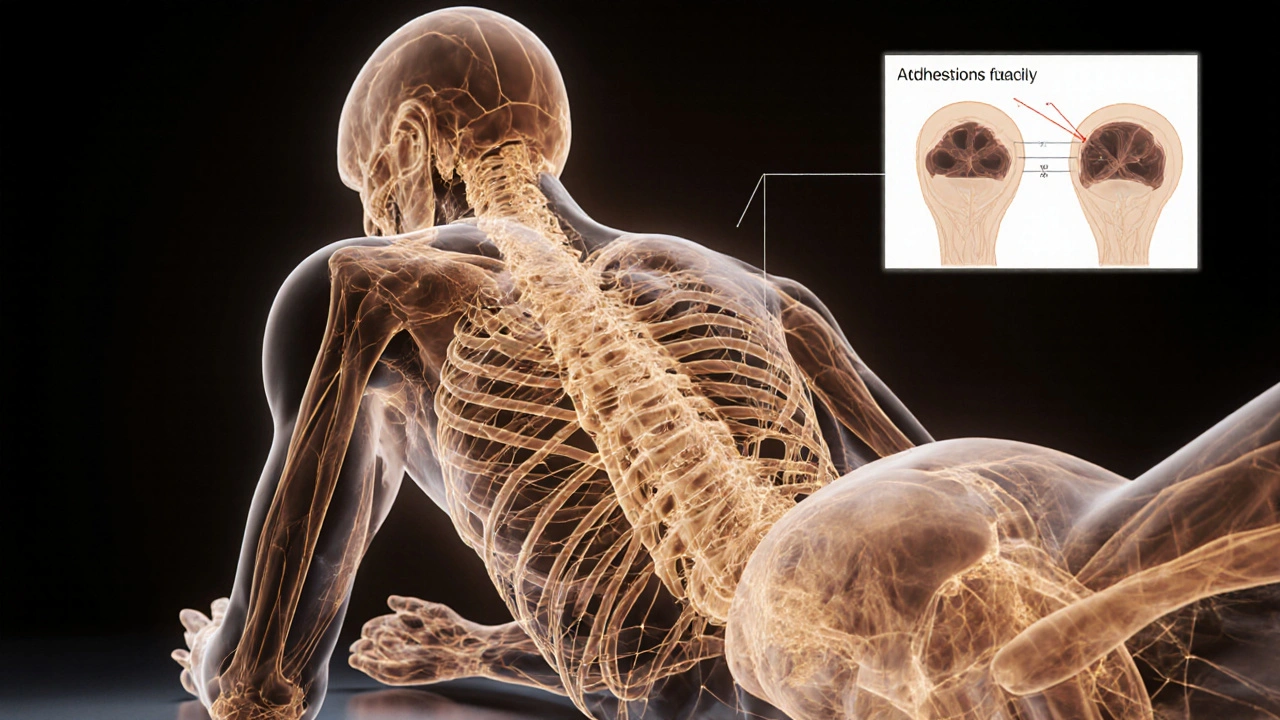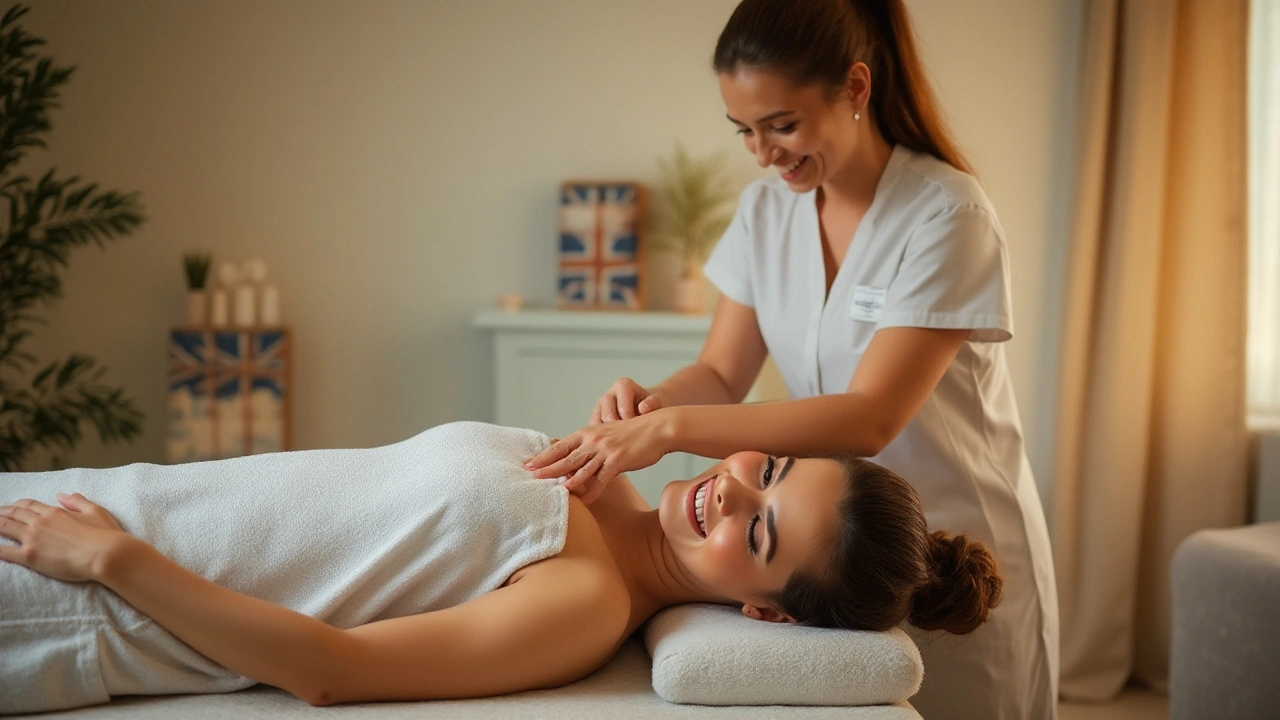The Healing Power of Shiatsu Massage: Breakthroughs in Holistic Wellness
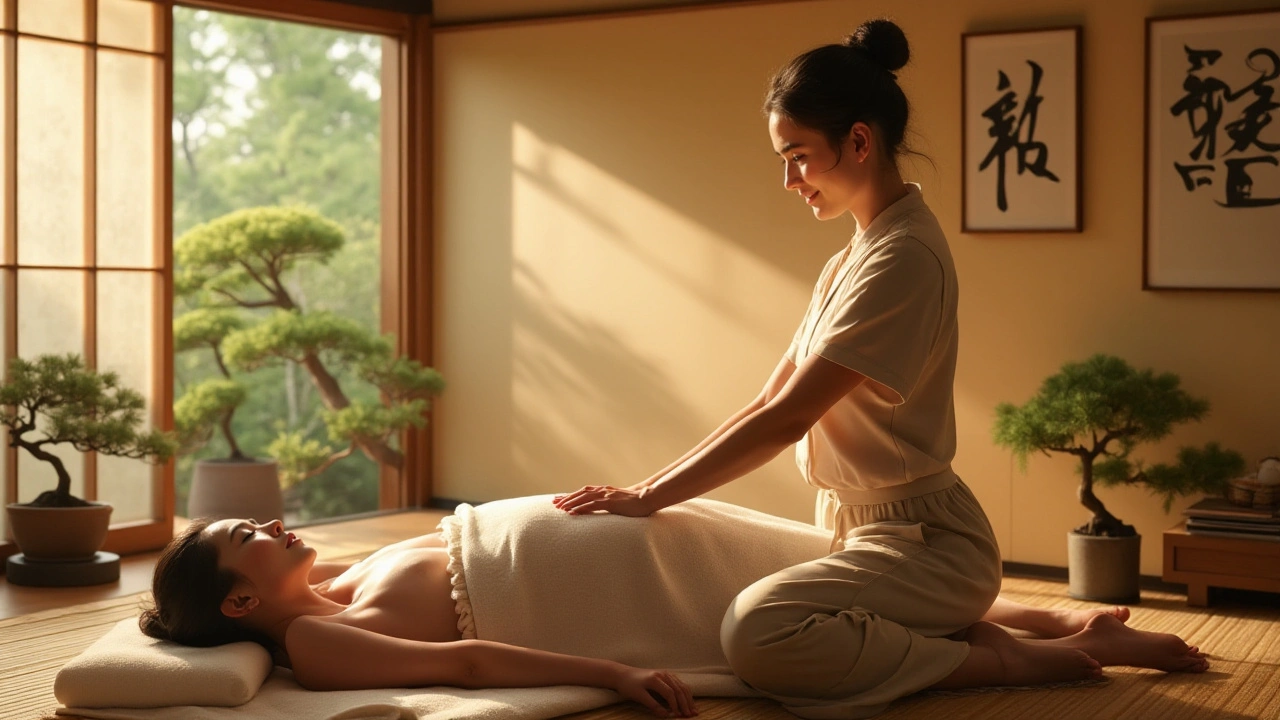
Shiatsu massage, a Japanese practice that dates back over a century, has been gaining fame worldwide for its healing touch. This form of bodywork stems from ancient Chinese medicine and integrates gentle finger pressure applied to specific points on the body.
Adopting a holistic approach, it emphasizes balancing the body’s internal energy or 'Qi' to promote both physical and emotional well-being. The hands-on techniques are designed not just to alleviate pain but also to restore the body's natural harmony.
This article explores the rich history and philosophies behind Shiatsu, the techniques used by skilled practitioners, the myriad benefits it offers, and how you can easily make it a part of your daily routine.
- Origins and Philosophy of Shiatsu
- Techniques and Practitioners
- Health Benefits of Shiatsu Massage
- Tips for Incorporating Shiatsu into Daily Life
Origins and Philosophy of Shiatsu
Shiatsu massage, deeply rooted in Japanese culture, finds its origins in the traditional healing practices of ancient China. The foundations were laid over a thousand years ago with the philosophies of Chinese medicine, specifically focusing on the concept of 'Qi' or life force energy. This vital energy runs through pathways in the body called meridians. The balance and flow of Qi are essential for maintaining physical and emotional health.
As Japanese healers began to develop their own interpretations of these practices, Shiatsu was born. The term 'Shiatsu' translates to 'finger pressure' in Japanese, effectively summarizing the core technique used in the therapy. Tokujiro Namikoshi, often credited as the founder of Shiatsu in its modern form, opened his first Shiatsu clinic in 1925 in Hokkaido, Japan. His innovations combined traditional methods with budding Western medical knowledge.
Shiatsu isn't just about manipulating muscles and tissues; it's an all-encompassing healing form that targets the well-being of both body and mind. The practice isn't just physical; it has a deep-rooted philosophy that believes in the power of touch to unlock blocked energies, promoting a balanced, harmonious state of being. According to Namikoshi, 'Shiatsu therapy is the application of pressure with the thumbs, fingers, and palms to the same points/acupuncture meridians on the body used in acupuncture... it regulates the essential energy known as Qi.'
One of the striking elements of Shiatsu is its holistic approach. Unlike conventional treatments that might focus solely on the symptomatic pain, Shiatsu aims to address the underlying causes. This involves a thorough understanding of various factors including lifestyle, emotional state, and diet, all of which influence one’s Qi. This comprehensive philosophy resonates with many people today who seek alternative medicine options offering more than just symptomatic relief.
The therapeutic basis of Shiatsu lies in its methodology of applying varied pressure. Practitioners use their thumbs, fingers, palms, and sometimes even elbows and knees to exert pressure on specific meridian points to stimulate energy flow. This methodology is applied with the recipient fully clothed, making it accessible and comfortable for more people.
Despite its ancient origins, Shiatsu has continually evolved. In more recent years, it has been adapted to suit contemporary wellness practices, incorporating anatomical and physiological knowledge without losing its holistic core. The beauty of Shiatsu lies in its adaptability - it has found a home in spas, rehabilitation centers, and private practices worldwide.
As an interesting point, the Japanese Ministry of Health officially recognizes Shiatsu as a form of medical therapy, a testament to its longstanding credibility and effectiveness. Practitioners often undergo rigorous training and certification processes to ensure high standards of practice. This blend of ancient wisdom and modern-day application makes Shiatsu a fascinating and effective component of holistic healing that draws people looking for a balanced approach to health and wellness.
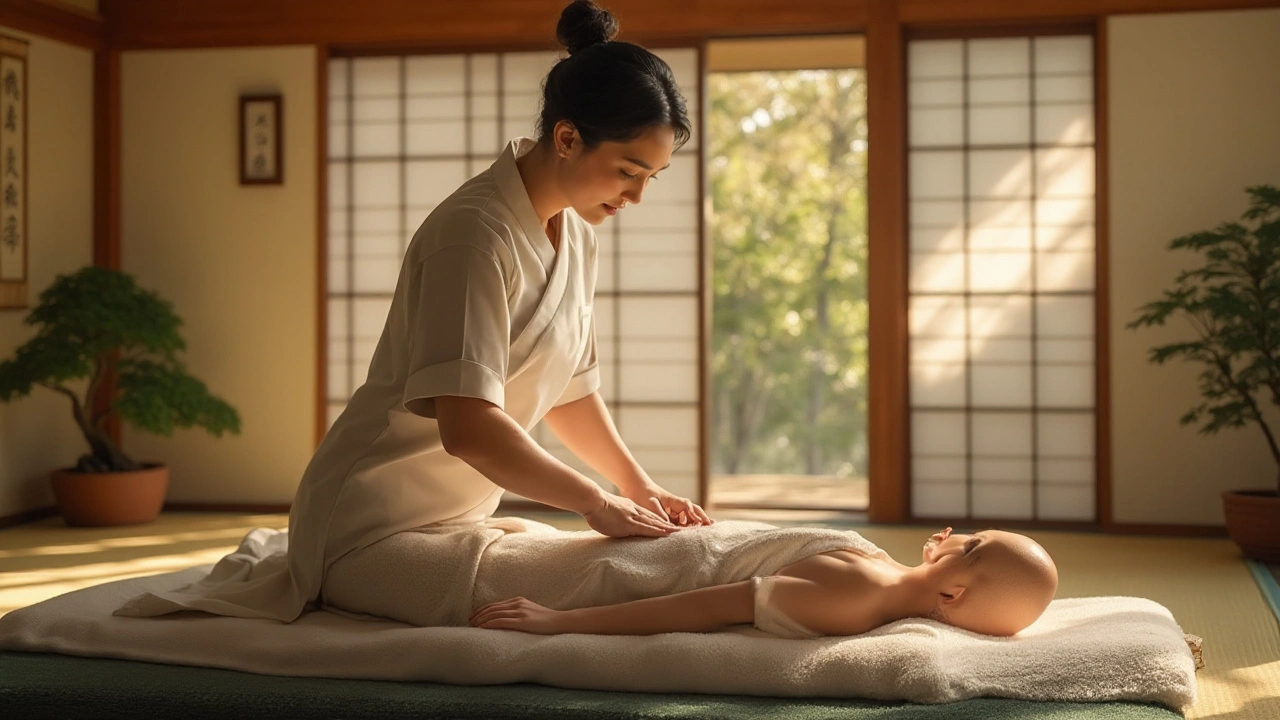
Techniques and Practitioners
The practice of Shiatsu massage involves a variety of techniques that harness the power of touch to restore balance and health in the body. Practitioners use their fingers, thumbs, palms, and even their knees and elbows to apply pressure along the body’s energy pathways, or meridians. This method, deeply rooted in traditional Chinese medicine, aims to unblock the flow of 'Qi' – the vital life force that sustains our being.
One of the standout techniques in Shiatsu is called 'Namikoshi Shiatsu,' named after its creator Tokujiro Namikoshi. In this approach, pressure is systematically applied to key points on the body to induce relaxation and promote healing. Another popular style is 'Zen Shiatsu,' developed by Shizuto Masunaga, which emphasizes gentle, flowing movements that work along the meridians.
In a typical Shiatsu session, a practitioner may start with a brief consultation to understand a client's specific needs. This is followed by a sequence of targeted pressure, stretches, and joint rotations performed on a mat or low table. The recipient is usually fully clothed, wearing loose-fitting attire to allow for a full range of motion. Shiatsu is unique in its holistic focus, striving to treat the whole person – mind, body, and spirit.
"Shiatsu therapy, with its grounding and meditative techniques, can offer a deeply relaxing experience." - Janet Walker, Certified Shiatsu Practitioner.
Professional Shiatsu practitioners undergo rigorous training to become proficient in this art. In Australia, for instance, they typically complete extensive coursework in anatomy, physiology, and traditional Oriental medicine, often accompanied by practical apprenticeships. Reputable practitioners are usually certified by recognized institutions, ensuring they meet high standards of practice. Seeking out a certified practitioner guarantees a safe and effective treatment.
Training programs often involve hands-on clinics where students practice under the supervision of experienced mentors. This period of supervised practice is crucial for learning the nuanced art of assessing and responding to the body's needs. Many practitioners also continue their education by attending workshops and conferences to stay current with evolving techniques and further refine their skills.
Understanding the specific techniques and expertise behind Shiatsu can help one appreciate the depth and benefits of this holistic therapy. Whether you're seeking relief from physical pain, mental stress, or just looking to enhance your overall well-being, Shiatsu offers a compelling, comprehensive approach that may be worth exploring.
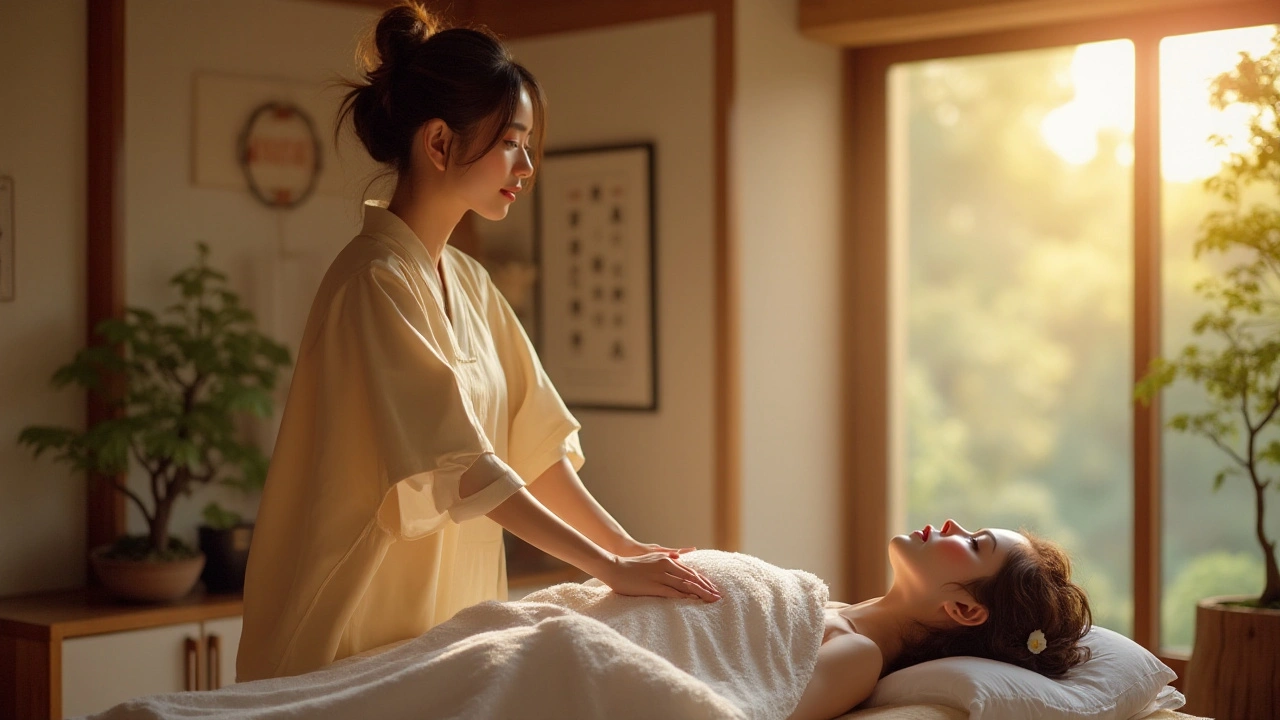
Health Benefits of Shiatsu Massage
Shiatsu massage isn't just about pressure points and relaxation; it brings along an array of health benefits that can truly transform your well-being. Rooted in traditional Chinese medicine, one of the main goals is to balance the body's energy flow, often referred to as 'Qi'. When your Qi is in harmony, the body can heal itself more effectively. This simple concept forms the backbone of this ancient practice and gives rise to its manifold benefits.
First and foremost, Shiatsu massage excels in alleviating stress. The techniques involved promote deep relaxation, which can significantly reduce cortisol levels in the body. Reduced stress levels naturally lead to lower blood pressure, improved sleep, and enhanced overall mental health. Individuals who regularly undergo Shiatsu treatment often report a noticeable decrease in anxiety and a boost in their mood and energy levels.
Another significant benefit of Shiatsu is pain relief. Whether you're suffering from chronic conditions like arthritis or more temporary pain such as migraines, Shiatsu's precise touch can offer relief. By targeting specific points, Shiatsu enhances blood circulation, helping to reduce inflammation and muscle tension. This improved blood flow also aids in detoxifying the body, further alleviating pain. According to a study published in the Journal of Alternative and Complementary Medicine, over 70% of participants experienced significant pain relief after just a few sessions.
Brian S. Carter, a licensed Shiatsu therapist, once mentioned, 'Shiatsu not only treats the symptoms but also the root cause of discomfort, making it an effective long-term solution.'
In addition to mental and pain-related benefits, Shiatsu holds promise for digestive health. Regular sessions can help regulate the digestive system, easing symptoms of irritable bowel syndrome and constipation. The consistent rhythmic pressure stimulates the parasympathetic nervous system, which governs the body's rest and digest functions, promoting a healthier digestive tract.
Moreover, Shiatsu massage offers benefits for the immune system. By reducing stress and improving blood flow, your body is better equipped to fight off infections and diseases. This immune-boosting effect can be particularly advantageous during cold and flu seasons. Some studies even suggest that Shiatsu can increase the number of natural killer cells, which play a key role in combating viruses and tumors.
For those dealing with hormonal imbalances, Shiatsu can also offer relief. The manipulation of pressure points helps regulate the endocrine system, balancing hormone levels that affect everything from mood to metabolism. Women suffering from menstrual pain or menopausal symptoms have found Shiatsu particularly beneficial.
Lastly, Shiatsu is great for enhancing mobility and flexibility. The massage techniques stretch and mobilize joints, relieving stiffness and improving range of motion. Athletes or individuals with physically demanding jobs often use Shiatsu as a preventive measure against injury and to expedite recovery.
All these benefits make Shiatsu massage a holistic treatment option for lasting health and well-being. Its multi-faceted approach not only tackles immediate concerns but also provides long-term wellness, affirming its status as a breakthrough in holistic healing.
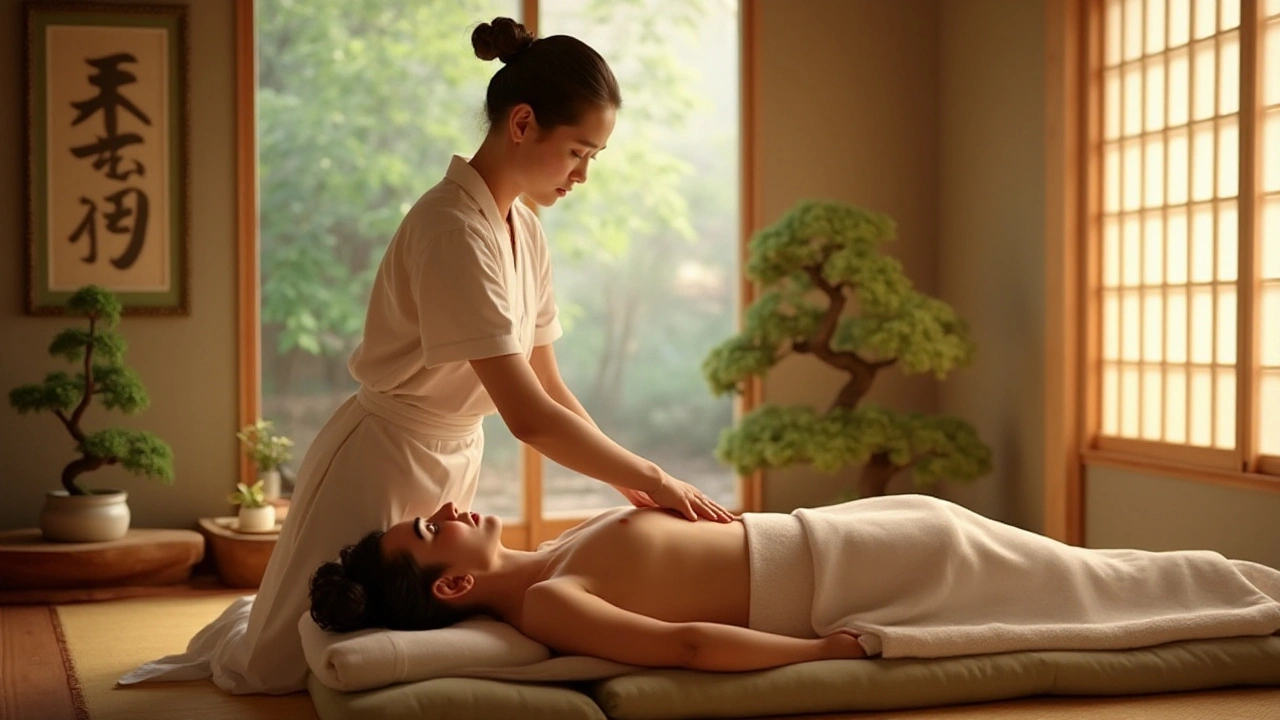
Tips for Incorporating Shiatsu into Daily Life
Embracing Shiatsu massage as part of your daily routine can be a transformative experience. Not only does it promote physical healing, it also encourages mental clarity and emotional balance. You don't need to be a professional to enjoy its benefits; a few simple steps can help you incorporate this holistic practice into your everyday life.
Firstly, consider learning basic Shiatsu massage techniques. Numerous online courses and workshops are available where you can grasp the foundational skills. These courses often teach you the essential points on your body to apply pressure and the correct ways to do it. Books and tutorial videos are also excellent resources to guide your learning process. Remember, consistency is key. Practicing these techniques regularly can significantly enhance your self-healing practices.
Next, create a conducive environment at home. A relaxed ambiance can greatly improve the effectiveness of Shiatsu massage. Dim the lights, play calming music, and use essential oils like lavender or eucalyptus to create a serene atmosphere. A quiet, clean space free of distractions can help you focus better on the practice and yield better results.
Integrate brief Shiatsu sessions into your daily schedule. A 10-15 minute session in the morning can set a positive tone for the day. Focus on areas where you often feel tension, such as your neck, shoulders, and lower back. Applying gentle pressure to these points can help alleviate stress and prepare you for the day ahead. In the evening, a short session can help unwind after a long day, promoting better sleep.
Including family members or roommates in your Shiatsu massage routine can also be beneficial. Partnering up for sessions can make the practice more enjoyable and can foster a sense of connection. Teaching children basic Shiatsu can help them manage stress and improve their focus, making it a wonderful family activity.
Mindfulness and meditation complement Shiatsu beautifully. A brief meditation session before your Shiatsu self-massage can enhance its effects. Focus on your breathing and clear your mind of distractions. This creates a mental space where you are more attuned to your body’s needs, allowing the practice to be more effective and enjoyable.
According to a study published in the Journal of Alternative and Complementary Medicine, regular Shiatsu sessions can significantly reduce stress levels and enhance overall well-being.
Lastly, remember to listen to your body. Shiatsu is a gentle practice, and it's essential to pay attention to how your body responds. Never apply more pressure than is comfortable. Over time, you'll become more attuned to your body's signals, allowing you to target areas that need more attention effectively.
Incorporating Shiatsu massage into your daily life is a commitment to self-care. It’s about making time for yourself and recognising the importance of both physical and mental well-being. With its roots in ancient practices and its benefits backed by modern science, Shiatsu offers an accessible and effective way to enhance your health and happiness.

